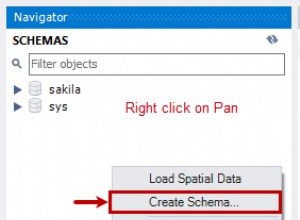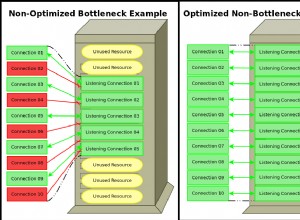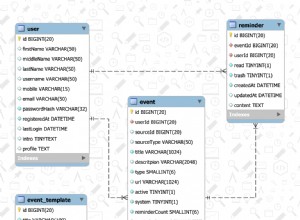Krok 1. Oblicz skumulowaną sumę stanu dla każdego zamówienia, używając wartości NOWY =1, AKTYWNY =1, WYKONANY =2:
select
order_id, timestamp::date as day,
sum(case new_state when 'DONE' then 2 else 1 end) over w as state
from order_state_history h
join orders o on o.id = h.order_id
where o.type = 1
window w as (partition by order_id order by timestamp)
order_id | day | state
----------+------------+-------
10000 | 2001-01-01 | 1
10000 | 2001-01-02 | 2
10000 | 2001-01-03 | 4
10001 | 2001-01-02 | 1
10004 | 2001-01-05 | 1
10004 | 2001-01-10 | 3
(6 rows)
Krok 2. Oblicz macierz przejścia dla każdego zamówienia na podstawie stanów z kroku 1 (2 oznacza NOWY->AKTYWNY, 3 oznacza NOWY->GOTOWY, 4 oznacza AKTYWNY->GOTOWY):
select
order_id, day, state,
case when state = 1 then 1 when state = 2 or state = 3 then -1 else 0 end as new,
case when state = 2 then 1 when state = 4 then -1 else 0 end as active,
case when state > 2 then 1 else 0 end as done
from (
select
order_id, timestamp::date as day,
sum(case new_state when 'DONE' then 2 else 1 end) over w as state
from order_state_history h
join orders o on o.id = h.order_id
where o.type = 1
window w as (partition by order_id order by timestamp)
) s
order_id | day | state | new | active | done
----------+------------+-------+-----+--------+------
10000 | 2001-01-01 | 1 | 1 | 0 | 0
10000 | 2001-01-02 | 2 | -1 | 1 | 0
10000 | 2001-01-03 | 4 | 0 | -1 | 1
10001 | 2001-01-02 | 1 | 1 | 0 | 0
10004 | 2001-01-05 | 1 | 1 | 0 | 0
10004 | 2001-01-10 | 3 | -1 | 0 | 1
(6 rows)
Krok 3. Oblicz skumulowaną sumę każdego stanu dla serii dni:
select distinct
day::date,
sum(new) over w as new,
sum(active) over w as active,
sum(done) over w as done
from generate_series('2001-01-01'::date, '2001-01-10', '1d'::interval) day
left join (
select
order_id, day, state,
case when state = 1 then 1 when state = 2 or state = 3 then -1 else 0 end as new,
case when state = 2 then 1 when state = 4 then -1 else 0 end as active,
case when state > 2 then 1 else 0 end as done
from (
select
order_id, timestamp::date as day,
sum(case new_state when 'DONE' then 2 else 1 end) over w as state
from order_state_history h
join orders o on o.id = h.order_id
where o.type = 1
window w as (partition by order_id order by timestamp)
) s
) s
using(day)
window w as (order by day)
order by 1
day | new | active | done
------------+-----+--------+------
2001-01-01 | 1 | 0 | 0
2001-01-02 | 1 | 1 | 0
2001-01-03 | 1 | 0 | 1
2001-01-04 | 1 | 0 | 1
2001-01-05 | 2 | 0 | 1
2001-01-06 | 2 | 0 | 1
2001-01-07 | 2 | 0 | 1
2001-01-08 | 2 | 0 | 1
2001-01-09 | 2 | 0 | 1
2001-01-10 | 1 | 0 | 2
(10 rows)




